احصل على عينات مجانية
احصل على عينات مجانية
Wine and sophistication often go hand in hand, and so does the packaging that holds this age-old beverage. While glass bottles and corks have long been the traditional choice, a new trend is emerging: wine pouches. Could this modern innovation be the future of fine wine packaging?

A wine pouch typically consists of a sturdy, flexible material designed to hold liquid. It often comes with a spout or tap for easy pouring, allowing consumers to enjoy wine without opening an entire bottle.
Wine pouches are generally made of multiple layers of plastic, foil, and other materials to protect the wine from light, oxygen, and external odors, all of which can affect its quality.
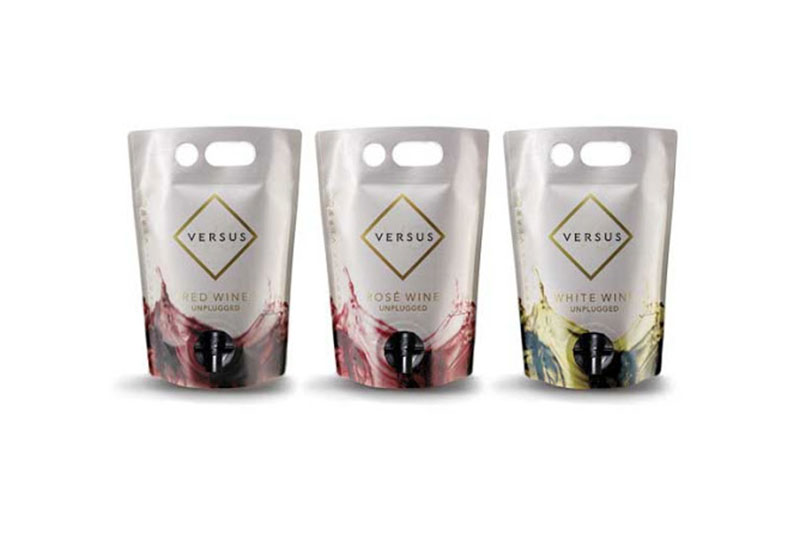
One of the most significant benefits of wine pouches is their portability. They are easier to carry and less fragile than traditional glass bottles, making them ideal for picnics, outdoor events, or even just a casual night at home.
Wine pouches often come with a vacuum-sealed tap, allowing you to pour a glass without exposing the remaining wine to air. This feature prolongs the wine's lifespan after opening.
Wine pouches weigh less than glass bottles, resulting in lower transportation costs and a reduced carbon footprint.

The strong barrier properties of the pouch materials help preserve the flavor profiles and tannins of red wines.
Pouches can protect white wines from light exposure, making them a suitable choice for preserving their delicate flavors.
While less common, even rosé and sparkling wines are making their way into pouch packaging.
Some consumers question whether wine pouches can offer the same quality experience as traditional glass bottles.
Packaging design, including the look and feel of the pouch, plays a significant role in attracting the modern wine consumer.
Specialized machinery is required to fill and seal wine pouches, especially when they come with a tap or spout.
Though the initial investment can be high, the reduced cost of materials and transportation often leads to long-term savings.
Innovations are continually emerging to make wine pouches from more sustainable materials, such as bioplastics.
While traditional pouches can be challenging to recycle, efforts are underway to develop fully recyclable or compostable options.
Legal requirements mandate specific labeling of the alcohol content, which varies from country to country.
Quality control measures must be rigorous to ensure that the wine maintains its integrity throughout its shelf life.
Some wineries have successfully shifted a portion of their product line to pouch packaging, gaining a new demographic of customers.
Transitioning to pouch packaging is not without its hurdles, including consumer perception and regulatory challenges.
The wine pouch market is steadily growing, especially among millennials and Gen Z consumers who prioritize convenience and sustainability.
New materials and sealing technologies are continually being developed, promising a brighter future for wine pouches.
The wine pouch is a disruptive innovation that challenges traditional notions of what wine packaging should be. Its benefits in terms of portability, preservation, and reduced environmental impact make it a compelling choice for both consumers and producers. While challenges exist, especially in terms of consumer perception and recyclability, ongoing innovations are likely to propel wine pouches into mainstream acceptance.
So, are you ready to raise a pouch to the future of wine packaging? With its myriad benefits and ever-evolving technology, the wine pouch is well on its way to becoming a staple in the world of fine wines. Cheers to innovation!
Are you tired of fumbling with unwieldy bottles or concerned about product waste due to spillage? Enter the era of spout pouches with spouts, an innovative packaging solution that marries convenience with functionality. Let's delve into what makes this packaging format a revolution in liquid handling.

The spout serves as the outlet for the liquid and can come in various shapes and sizes. It often includes a cap for resealing the pouch after use.
The body of the spout pouch is typically made of layered materials that provide the necessary barrier properties to preserve the contents.
While the top-center is a common position, spout placement can vary depending on the product's intended use and the manufacturer's design philosophy.
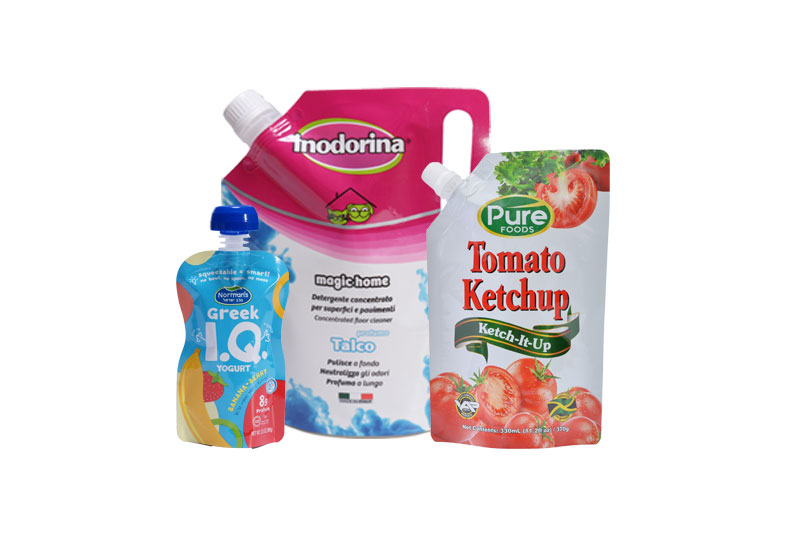
Imagine not having to unscrew a cap every time you need to pour a liquid. Spout pouches offer unparalleled ease of use.
The focused directionality of the spout minimizes the risk of spilling, thereby reducing product waste.
With the ability to reseal the pouch after each use, spout pouches maintain product freshness for extended periods.
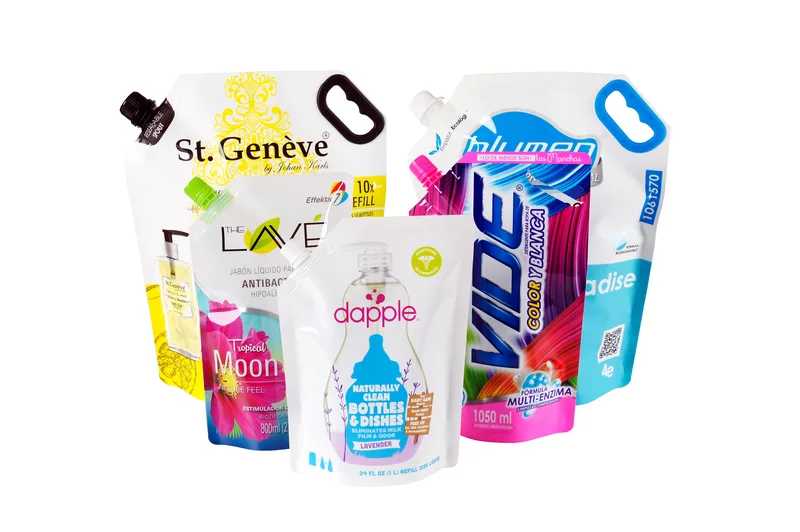
Most spout pouches are primarily made of various types of plastic for durability and low cost.
Some spout pouches incorporate a layer of foil to improve barrier properties, particularly for sensitive contents.
Advanced spout pouches often utilize multi-layer films that combine the best properties of various materials.
From juices to sauces, spout pouches are becoming increasingly popular in the food and beverage sector.
Cleaning supplies, detergents, and even gardening products find a safe and convenient home in spout pouches.
Oils, lubricants, and other industrial liquids can be packaged effectively using spout pouches.
The diameter of the spout affects pour speed and control, requiring careful design choices based on the liquid's viscosity.
Various cap designs offer different levels of security and ease of use, ranging from simple screw caps to more complex, child-proof options.
A resealable spout ensures that the contents remain fresh and usable for an extended period, thereby enhancing product lifespan.
Incorporating child safety features in the spout design is essential for products that could be hazardous if ingested.
To ensure product integrity, tamper-evident seals are often included in the design of spout pouches.
In the quest for more sustainable packaging, biodegradable spout pouches are slowly emerging as a viable alternative.
Multi-layered spout pouches pose a challenge for recycling, and efforts are underway to develop more easily recyclable versions.
The design of a spout pouch must cater to consumer needs for ease of handling and pouring.
The visual appeal of the spout pouch, including its color and branding, plays a significant role in consumer choice.
Manufacturers must adhere to stringent food safety standards when producing spout pouches for edible items.
Environmental considerations are increasingly influencing the materials and processes used in spout pouch manufacturing.
Spout pouches with spouts are not merely a fad; they are a transformative force in the world of packaging. They offer a slew of benefits ranging from user convenience to improved product integrity. While there are challenges in the areas of sustainability and regulation, ongoing innovations promise to make these packaging solutions even more compelling in the future.
Isn't it amazing how something as simple as adding a spout to a pouch can create a packaging solution that transforms the consumer experience? With their blend of convenience and innovation, spout pouches are undoubtedly shaping the future of liquid packaging.
In the ever-evolving world of packaging, gusset pouches are making their mark. But what are gusset pouches, and why are they becoming increasingly popular among both consumers and businesses? This article delves into the details, shedding light on this innovative packaging solution.
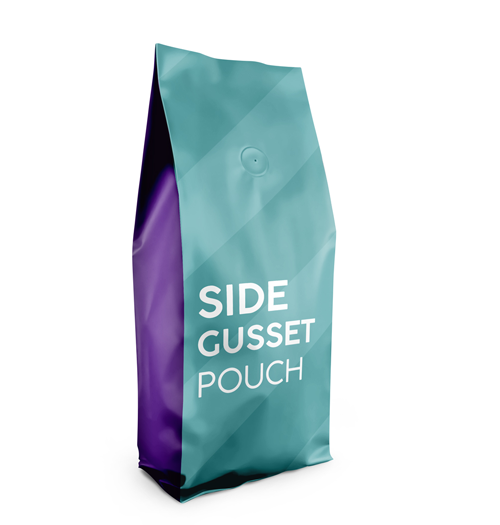
Side gusset pouches are designed with gussets on both sides, expanding the bag’s capacity. They are commonly used for products like coffee, tea, and baked goods.
In bottom gusset pouches, the gusset is located at the bottom, providing a stable base for the pouch to stand upright. This design is ideal for products like pet food and granular items.
Quad seal pouches are constructed with four corner seals, offering exceptional strength and stability. These are ideal for heavier products and bulk items.
One of the key benefits of gusset pouches is their ability to efficiently use space, both in terms of storage and on retail shelves.
From food items to garden soil, gusset pouches can be customized to suit a wide range of products, offering incredible versatility.
Constructed using various materials, including strong plastics and foils, gusset pouches offer excellent protection against external elements.
The larger surface area of gusset pouches provides ample space for branding, making them a fantastic marketing tool.
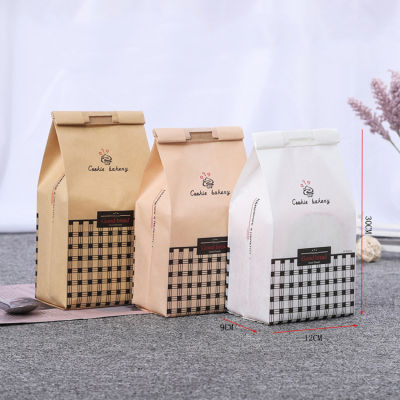
Plastic gusset pouches are durable and offer good barrier properties but may raise sustainability concerns.
Foil-based gusset pouches offer excellent barrier properties and are commonly used for sensitive products.
For brands looking for a more eco-friendly option, kraft paper gusset pouches are increasingly popular.
Gusset pouches are extensively used in the food and beverage sector for packaging items like coffee, snacks, and dry fruits.
The sturdy design of gusset pouches makes them ideal for pet food packaging, especially for larger quantities.
Items like fertilizers, soil, and seeds are often packaged in gusset pouches due to their durability and space-efficiency.
Certain medications and health supplements also find their way into gusset pouches for their protective qualities.
Improper sealing can compromise the quality of the product, necessitating rigorous quality checks.
Not all products are compatible with every type of gusset pouch material, requiring careful selection.
The cost of gusset pouches can be higher than traditional bag types, especially for small-scale businesses.
Innovations in barrier layers are enhancing the protective qualities of gusset pouches, especially for sensitive products.
The addition of re-sealable zippers is a game-changer, offering consumers added convenience.
The multi-layer construction of some gusset pouches can make recycling a challenge.
Emerging biodegradable materials offer a sustainable alternative, although they are not yet widely available.
The design of gusset pouches, often with re-sealable options, makes them user-friendly and convenient.
The modern look and feel of gusset pouches often make them more attractive to consumers, adding to their growing popularity.
Gusset pouches are revolutionizing the way we think about packaging. From their space-efficient design to their versatility, they offer numerous advantages that both consumers and manufacturers can appreciate. Although challenges exist, technological advancements are continually improving their functionality and sustainability.
Isn't it fascinating how a simple design change can make a world of difference in packaging? The gusset pouch is more than just a trend; it's a promising solution for the future of packaging.
With growing awareness about environmental sustainability, paper pouch packaging is gaining significant traction. But what exactly is paper pouch packaging, and why is it becoming the go-to choice for both consumers and manufacturers alike? This guide aims to answer these questions and more.
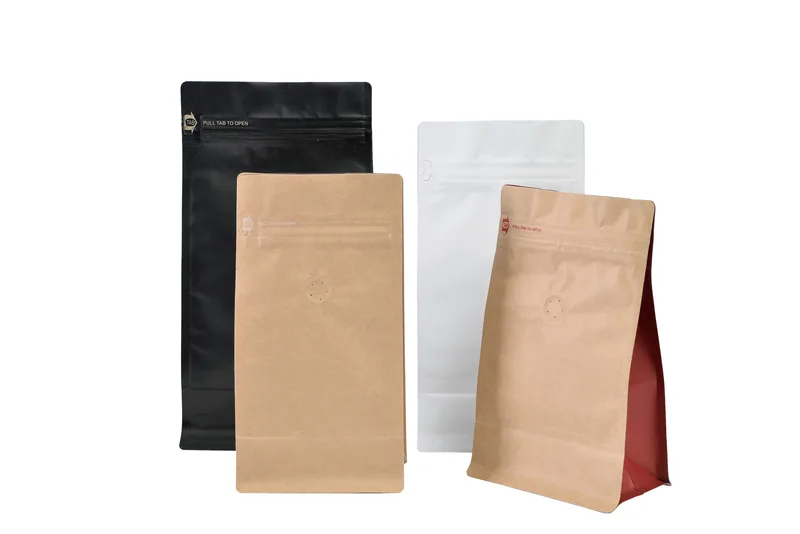
Kraft paper pouches are made from chemical pulp produced in the kraft process. They're robust, durable, and often used for packing grains, spices, and other dry goods.
As the name suggests, this type of paper is resistant to grease and is ideal for packaging oily foods or baked goods.
Coated paper pouches have a thin layer of material like wax or polymer, enhancing its barrier properties against moisture and air.
Laminated paper involves the fusion of two or more types of materials, offering the benefits of increased strength, improved aesthetics, and additional barrier properties.
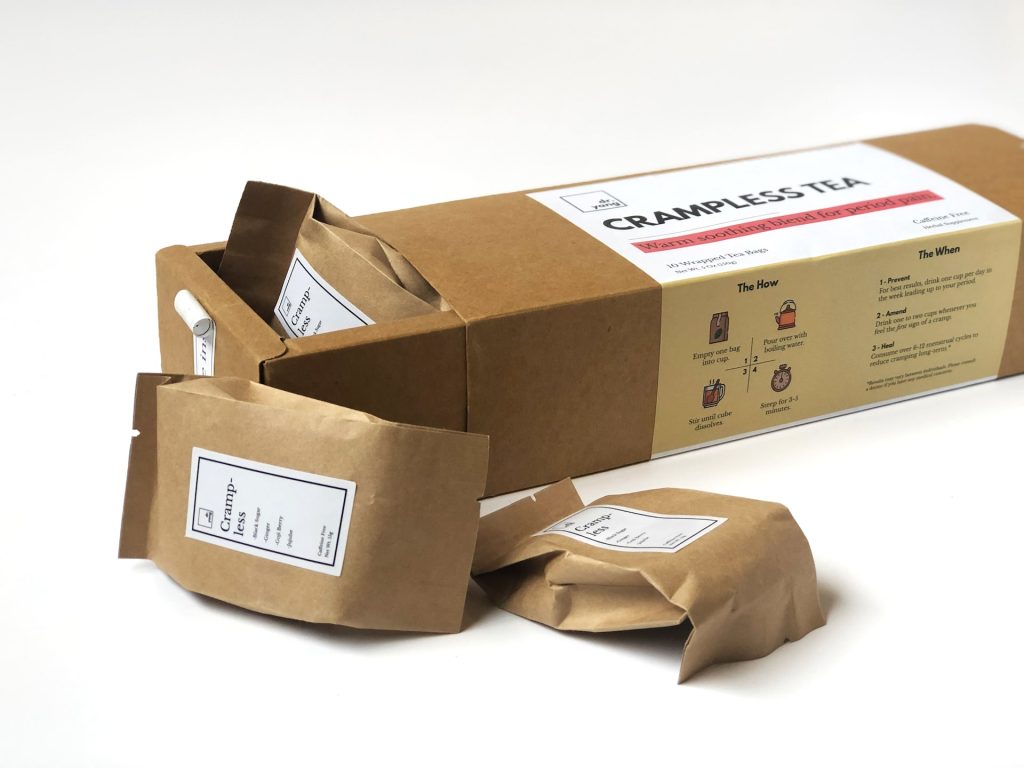
Paper pouches are made from renewable resources and are easily recyclable, reducing their carbon footprint.
With the advancement in printing technologies, paper pouches can be customized in various ways, allowing brands to communicate their message effectively.
In addition to being recyclable, most paper pouches are biodegradable, providing an end-of-life solution that’s better for the environment.
The natural look and feel of paper often appeal to consumers, adding a perceived value to the product inside.
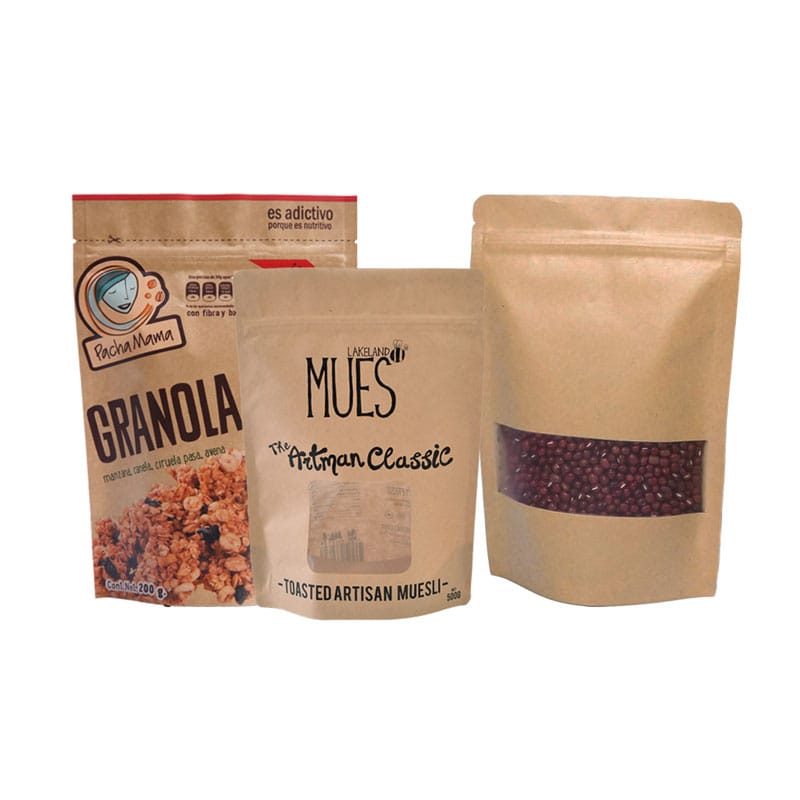
Paper pouches are particularly popular in the food sector, where they are used for packaging snacks, coffee, tea, and even some types of fresh produce.
Items like bath salts, face masks, and organic beauty products often find their way into attractively designed paper pouches.
In the retail sector, paper pouches are used for packaging various small items like accessories, stationery, and gifts.
Paper pouches generally offer less protection against moisture compared to plastic, which can be a drawback for certain products.
Although advancements have been made, paper pouches are generally less durable than their plastic counterparts, particularly when it comes to handling and transportation.
While consumers are increasingly willing to pay a premium for sustainable options, the cost of paper pouches can be higher than traditional plastic pouches.
New types of coatings are being developed to improve the barrier properties of paper pouches without compromising their recyclability.
Digital printing technologies are enabling more complex and vibrant designs, making paper pouches more attractive and functional.
Consumers are becoming increasingly aware of the environmental impact of their choices, making sustainable options like paper pouches more attractive.
Studies show that consumers are willing to pay a premium for products that are sustainably packaged, which bodes well for the future of paper pouch packaging.
The move towards paper pouch packaging is more than a trend; it’s a reflection of changing consumer attitudes and growing environmental concerns. While challenges remain, technological innovations and consumer willingness to adapt are pushing the industry forward.
Isn't it remarkable how a simple shift in packaging materials can make such a significant impact on both the environment and consumer behavior?
Flexible packaging is an ever-evolving industry, pushing boundaries to meet consumer demands and environmental considerations. It is no longer just a way to contain a product; it's an extension of the brand and an essential part of the product experience. This guide aims to unpack the types, applications, properties, and sustainability of flexible packaging materials.

Plastics dominate the flexible packaging sector because of their versatility, lightweight, and low cost. Materials like polyethylene, polypropylene, and polyester are widely used for a variety of products, from food items to cosmetics.
Aluminum foil offers excellent barrier properties and is commonly used for sensitive items such as pharmaceuticals or premium food products. However, its environmental impact is a point of concern.
Although less protective than plastic or foil, paper-based flexible packaging is gaining traction due to its recyclability and biodegradability. It's an excellent choice for dry products like sugar, flour, and spices.
Materials like polylactic acid (PLA) derived from corn or sugarcane are emerging as a sustainable alternative to traditional plastics. These bio-based materials are compostable and provide good barrier properties.
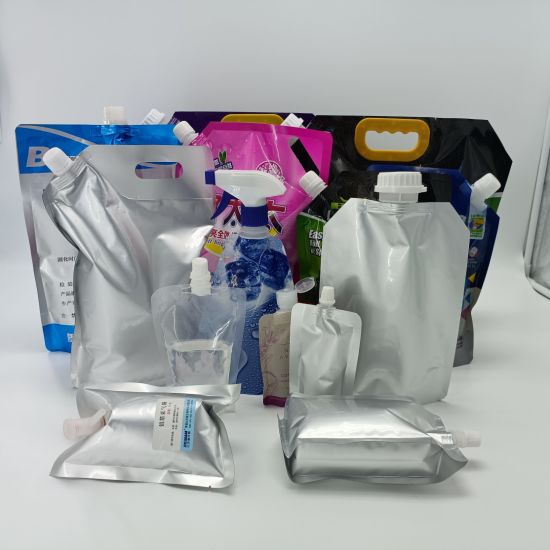
Flexible packaging is essential in the food industry for preserving the freshness and extending the shelf life of various products like meat, snacks, and frozen foods.
Sensitive pharmaceutical products require specialized flexible packaging solutions that offer strong barrier properties against moisture, light, and oxygen.
Lotions, creams, and other personal care products often come in squeeze tubes or sachets made from multi-layer flexible packaging materials to maintain product integrity.
Flexible packaging also has wide-ranging applications in the industrial sector, especially for packing bulk items like chemicals, adhesives, and coatings.
Barrier qualities are crucial for preserving the contents, especially for perishable goods and pharmaceuticals. Materials must protect against factors like moisture, oxygen, and light.
Flexible packaging needs to withstand various stress factors such as transportation, handling, and temperature fluctuations without compromising the product inside.
The look and feel of the packaging play a significant role in consumer decision-making. High-quality printing options are available to make flexible packaging visually appealing.
One of the major advantages of flexible packaging is its lightweight nature, which cuts down transportation costs and the overall carbon footprint.
The move towards recyclable flexible packaging materials is gaining speed, fueled by consumer demand and new legislation.
Biodegradable options like paper and bio-based plastics are making inroads, offering a more sustainable end-of-life scenario for the packaging.
Flexible packaging often uses fewer resources in production, storage, and transportation compared to rigid packaging options, making it a resource-efficient choice.
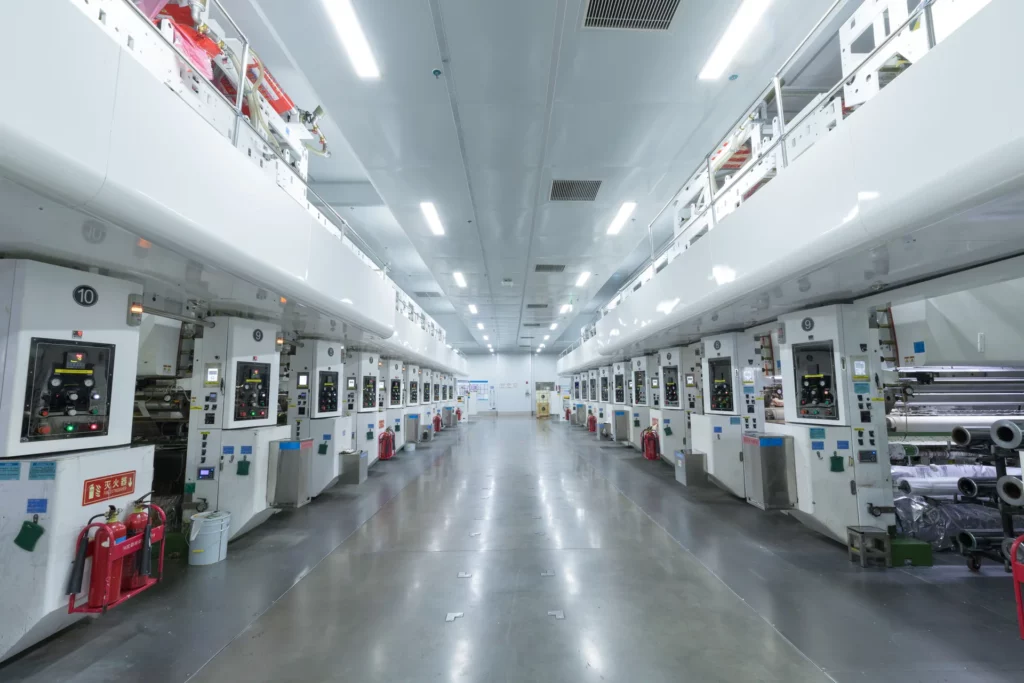
QR codes, NFC chips, and other smart technologies are being integrated into flexible packaging to offer added value like product information and authentication.
Technologies like moisture absorbers and oxygen scavengers are being incorporated to extend the shelf life and maintain the quality of the products.
The modern consumer is looking for convenience, sustainability, and value, driving innovation and trends in the flexible packaging industry.
Governmental regulations are pushing the industry towards more eco-friendly solutions, influencing material choices and recycling initiatives.
Flexible packaging is a dynamic field, adapting to meet various challenges from consumer demands to environmental concerns. Understanding the materials and their properties can help brands make informed decisions that align with both their marketing goals and sustainability commitments.
So, as you navigate through the world of flexible packaging materials, this guide should serve as a comprehensive resource to make informed decisions. Isn't it fascinating how something as seemingly simple as packaging can be so complex and impactful?
Food packaging is more than just a vessel to hold your product; it's a powerful marketing tool and a safeguard for food quality and safety. The focus of this guide is to provide an all-encompassing look at food packaging pouches, discussing types, materials, and sustainability measures in-depth.
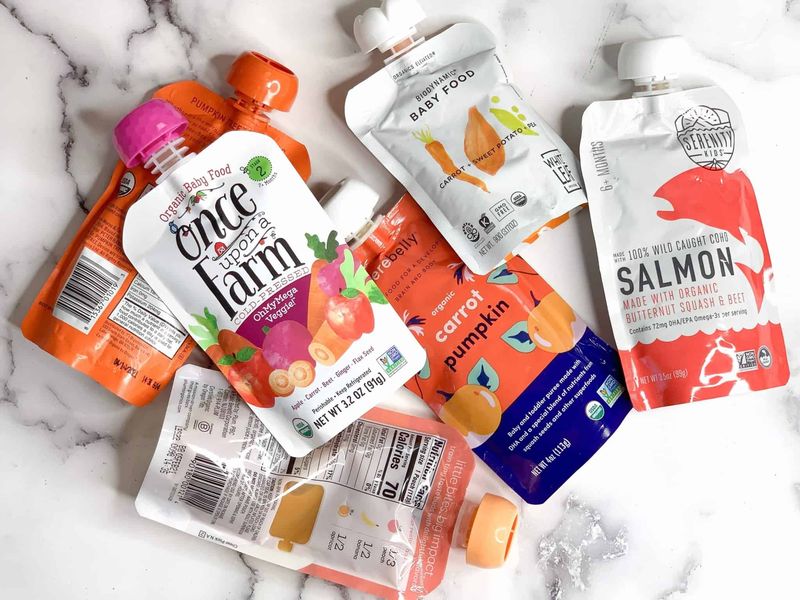
Stand-up pouches have gained popularity due to their aesthetic appeal and functional design. With a sturdy base and often coming with a resealable top, they are perfect for a variety of food items such as snacks, grains, and even liquids. The upright design also offers excellent visibility on store shelves.
Flat pouches are the go-to choice for single servings or sample sizes of products. These pouches are compact and are often used for condiments, sauces, or instant mixes. The simplicity of their design also makes them cost-effective for businesses.
Retort pouches are a fantastic innovation in food packaging, allowing for the thermal processing of food within the pouch itself. This extends the shelf life of the product without requiring refrigeration. They are commonly used for ready-to-eat meals, soups, and sauces.
Primarily used for liquid or semi-liquid food products, spouted pouches come with a resealable spout at the top or the corner of the pouch. This design makes it convenient for repeated use and is particularly popular for items like drinks, sauces, and even baby food.
Vacuum pouches are designed to remove air from the package before sealing, extending the shelf life of the food item considerably. These pouches are ideal for perishable goods like meat, fish, and some types of dairy.

Due to its low cost and versatile properties, plastic is the most common material used. However, concerns about sustainability are driving changes in material choice.
Aluminum offers excellent barrier properties against moisture and air but raises environmental concerns due to its recycling complexities and energy-intensive production process.
Made from renewable resources, bioplastics are becoming increasingly popular as a sustainable alternative to traditional plastics.
Composite materials often combine the best properties of different materials, like plastic and aluminum, to create a more functional yet challenging-to-recycle pouch.
Visual elements, including logos, product images, and unique design motifs, play a pivotal role in capturing consumer attention.
The choice of colors and fonts can subtly convey your brand message and product quality, affecting consumer perception and decision-making.
Accurate and transparent labeling, covering nutritional facts, ingredients, and usage instructions, is not just a regulatory requirement but also a vital aspect of consumer trust.
Zip locks add a layer of convenience and functionality, allowing consumers to keep the product fresh after opening.
These small, pre-cut notches simplify the opening process, enhancing the user experience significantly.
Tamper evident seals provide an added layer of security, ensuring that the product has not been interfered with during its journey from the factory to the consumer.
Some pouches incorporate a gas flush feature that replaces the air inside the pouch with an inert gas, thereby preserving the product's quality for an extended period.
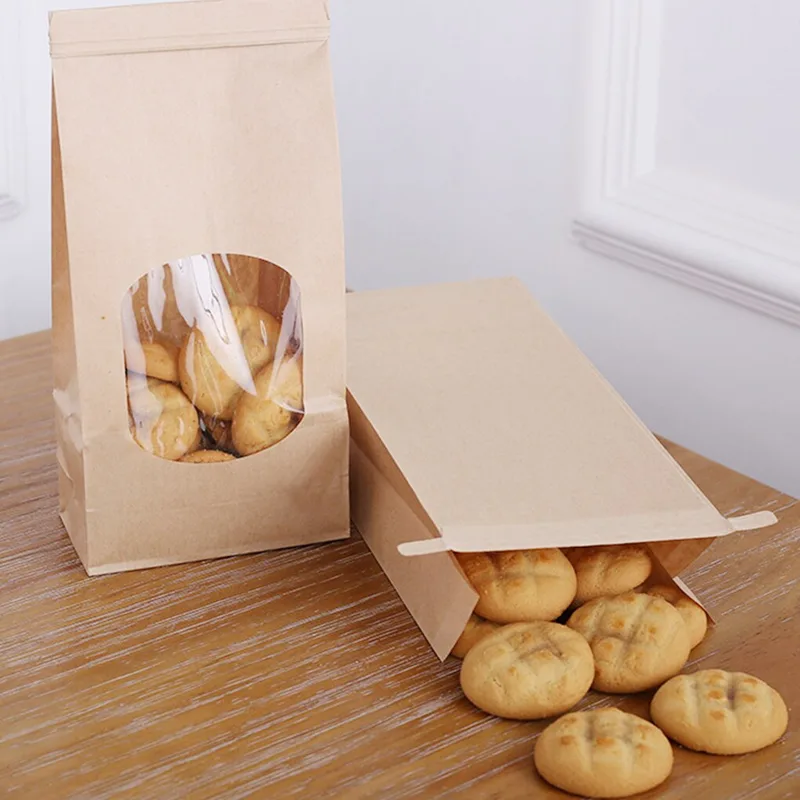
Several companies are pioneering biodegradable pouch options, usually made from cornstarch or other plant-based materials.
The push for more recyclable packaging options is gaining momentum, fueled by consumer demand and regulatory changes.
Reusable pouches, made from more durable materials, are entering the market, aimed at consumers who are environmentally conscious and willing to invest in sustainable packaging.
The modern consumer values convenience, making features like resealable tops and easy-open notches increasingly popular.
With rising awareness about the environmental impact of packaging waste, consumers are more willing than ever to choose eco-friendly options.
A visually appealing package can significantly impact a consumer's decision to purchase, making design elements crucial.
Food packaging must meet FDA standards, which cover everything from the materials used to labeling requirements.
Apart from nutritional facts and ingredients, labels must also include allergen warnings and, in some cases, recycling information.
Incorporating QR codes or NFC technology allows consumers to access additional product information, recipes, and even verify product authenticity.
Emerging as a novel idea, edible packaging offers a waste-free alternative and could be the future of sustainable food packaging.
Companies are making strides in adopting circular economy principles, aiming to create packaging that can be easily recycled or composted.
As the world continues to evolve, so does the landscape of food packaging pouches. From different types and materials to an increasing focus on sustainability and consumer preferences, food packaging pouches are more than just containers; they're a significant element in a product's success. As we look ahead, innovations and consumer demands will continue to shape this dynamic industry.
So, the next time you're in the grocery store, perhaps you'll look at those pouches on the shelves a bit more thoughtfully, eh?
إن ممر القهوة في متجرك المحلي ليس مجرد مجموعة من ماركات ونكهات القهوة المختلفة؛ إنها ساحة معركة لتصميم التغليف ووظائفه. يمكن أن يؤثر شكل كيس القهوة وملمسه ووظائفه بشكل كبير على قرار الشراء الخاص بك. يهدف هذا الدليل الشامل إلى التعمق في عالم أكياس القهوة متعدد الأوجه، ومناقشة الأنواع والميزات ومسألة الاستدامة البالغة الأهمية.
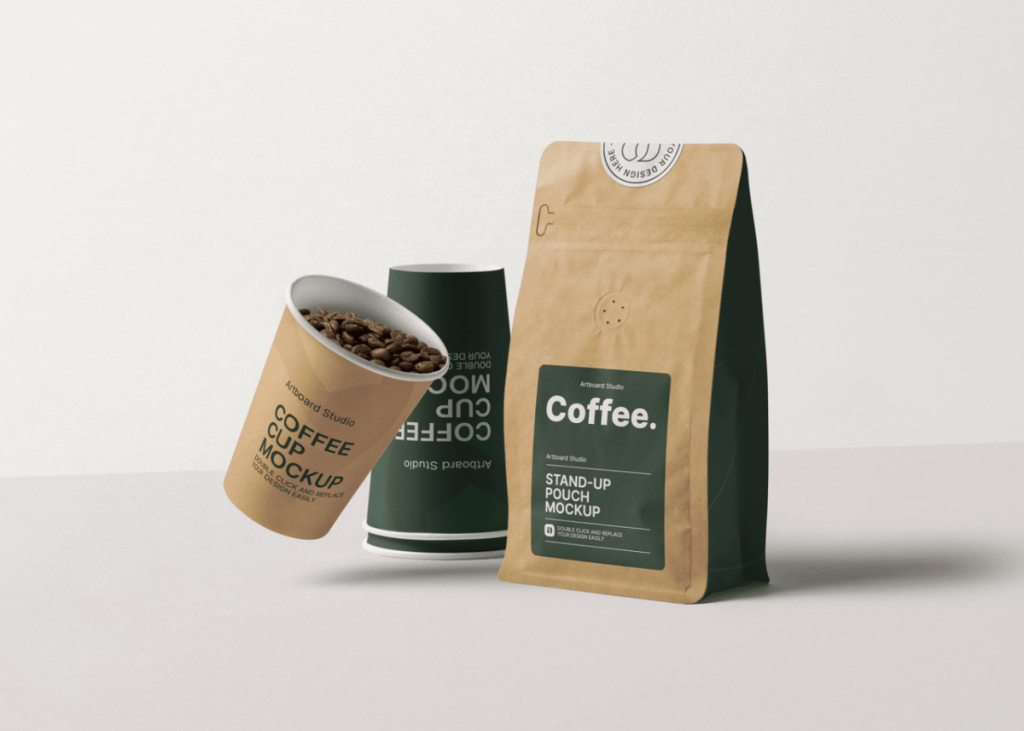
أحد أكثر أنواع أكياس القهوة شيوعًا هو كيس الصمام. صُممت هذه الأكياس خصيصًا لإخراج الغازات المنبعثة من حبوب القهوة المحمصة حديثًا، وتضمن بقاء الحبوب طازجة لفترة طويلة. يعد الصمام ميزة مهمة تمنع الكيس من الانفجار بسبب الغازات المحتبسة بينما يمنع الهواء الخارجي من الدخول وإفساد القهوة.
هذه الحقائب هي أكياس القهوة التقليدية الخاصة بك في المدرسة القديمة ولها ألواح تقوية على كلا الجانبين تتوسع عند امتلاء الكيس. إنها متعددة الاستخدامات ومفيدة بشكل لا يصدق لتعبئة البن المطحون والحبوب الكاملة. هيكلها أكثر ملاءمة للكميات الكبيرة، مما يجعلها مشهورة بين موردي القهوة.

تم تصميم الأكياس القائمة للوقوف بشكل منتصب على الرف، مما يوفر رؤية ممتازة وسهولة الوصول إليها. تأتي عادةً بسحابات قابلة للإغلاق وهي مثالية للمستخدمين الذين يفضلون سهولة تخزين القهوة دون الحاجة إلى حاوية إضافية.
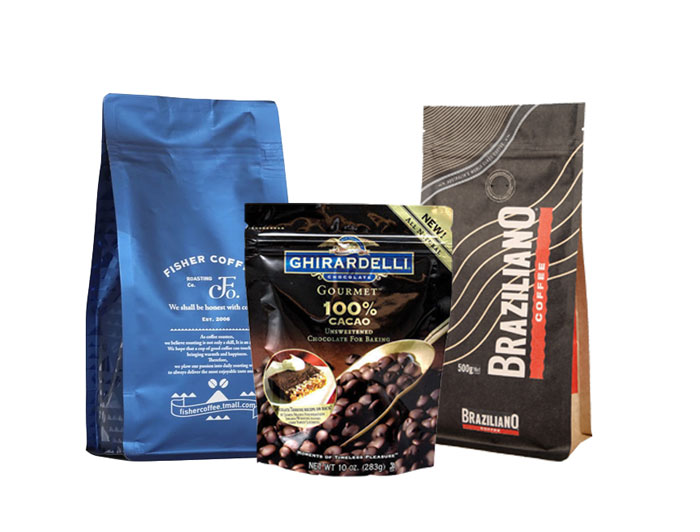
تحتوي الأكياس ذات الختم الرباعي على أختام على جميع أركان الحقيبة الأربعة. تسمح هذه الميزة الفريدة لها بالحفاظ على شكلها بشكل أفضل وتوفر حماية معززة ضد العوامل الخارجية مثل الرطوبة والهواء، مما يضمن بقاء قهوتك طازجة لفترة طويلة.
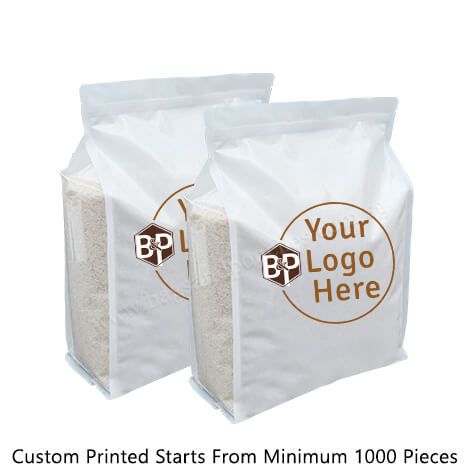
غالبًا ما تُصنع أكياس كرافت من الورق وتعتبر خيارًا صديقًا للبيئة. تتوافق هذه الحقائب بشكل جيد مع طلب المستهلكين المتزايد على التغليف المستدام. عادة ما تكون مبطنة بطبقة من رقائق الألومنيوم، والتي تعمل كحاجز للضوء والأكسجين والرطوبة، وكلها يمكن أن تؤدي إلى انخفاض جودة القهوة.
البلاستيك خفيف الوزن، ومرن، ورخيص نسبيًا، مما يجعله مادة شائعة لأكياس القهوة. ومع ذلك، فهو ليس خيارًا مثاليًا من منظور بيئي لأنه من غير المرجح إعادة تدويره ويمكن أن يساهم في النفايات.
يعد الألومنيوم حاجزًا ممتازًا للضوء والأكسجين والرطوبة، وكلها أعداء لنضارة قهوتك. ومع ذلك، فهي مادة كثيفة الاستهلاك للطاقة، ولا يمكن لجميع برامج إعادة التدوير التعامل معها، مما يجعلها خيارًا أقل من مثالي للمستهلكين المهتمين بالبيئة.
الأكياس الورقية قابلة للتحلل ويمكن أن تكون خيارًا جيدًا من الناحية البيئية. ومع ذلك، فهي مسامية، وبالتالي فهي ليست الأفضل لتخزين القهوة على المدى الطويل، لأنها تسمح بدخول الهواء والرطوبة.
تستخدم بعض الحقائب مزيجًا من المواد مثل البلاستيك والألومنيوم والورق لتحقيق أقصى قدر من فوائد كل منها. في حين أن هذا يجعل الحقيبة عملية للغاية، إلا أنه يمكن أن يجعل إعادة التدوير تحديًا، حيث يجب فصل المواد المختلفة قبل إعادة تدويرها بشكل فردي.
يمكن للتصميم الجذاب المكتمل بالرسومات والصور الجذابة أن يؤثر بشكل كبير على اختيار المستهلك. لا تجذب الصور عالية الجودة الانتباه فحسب، بل يمكنها أيضًا نقل جودة وأصالة القهوة الموجودة داخل الكيس.
الألوان ليست للعرض فقط؛ أنها تلعب دورا هاما في علم نفس المستهلك. قد تشير الألوان الترابية إلى القهوة العضوية أو المصنوعة يدويًا، في حين قد تشير الألوان النابضة بالحياة والجريئة إلى نكهة فاكهية أو غريبة.
تعد الطباعة الواضحة والأنيقة ضرورية لنقل معلومات المنتج المهمة دون إرباك المستهلك. يجب أن يكون الخط مقروءًا، ويجب أن ينقل النص قصة العلامة التجارية أو أصل القهوة أو حتى تعليمات التخمير بشكل فعال.
تساعد صورة العلامة التجارية المتسقة على بناء الثقة وتعزيز ولاء العملاء. يتضمن ذلك أنظمة ألوان وطباعة ورسومات موحدة عبر جميع خطوط الإنتاج، بما في ذلك أكياس القهوة.
التأكد من أن الكيس محكم الإغلاق يضمن بقاء قهوتك طازجة لفترة أطول. يتم ذلك غالبًا باستخدام تقنيات الختم الحراري أو عمليات الإغلاق المتخصصة مثل السوستة أو المشابك.
القهوة الطازجة تنبعث منها غازات؛ لذلك، من الضروري وجود صمام تفريغ للسماح لهذه الغازات بالهروب دون السماح للهواء بالدخول. وهذا يمنع الكيس من الانفجار ويحافظ على القهوة طازجة.
تضيف السحابات طبقة من الراحة للمستهلك، مما يسمح له بإعادة إغلاق الكيس بسهولة بعد كل استخدام، وبالتالي الحفاظ على نضارة القهوة.
وهي عبارة عن شقوق صغيرة مقطوعة مسبقًا تسهل على المستهلك فتح الحقيبة دون الحاجة إلى مقص أو سكاكين، وبالتالي تعزيز تجربة المستخدم الشاملة.
مصنوعة من مواد مثل نشا الذرة أو قصب السكر، وتتحلل الأكياس القابلة للتحلل بشكل طبيعي مع مرور الوقت، ولا تترك أي أثر. يعد هذا خيارًا جذابًا للمستهلكين المهتمين بالتأثير البيئي.
من السهل إعادة تدوير الأكياس المصنوعة من مادة واحدة، والتي غالبًا ما تكون مصنوعة بالكامل من نوع واحد من البلاستيك أو الورق، وبالتالي أصبحت ذات شعبية متزايدة.
يمكن للأكياس المصممة للاستخدامات المتعددة أن تقلل النفايات بشكل كبير. غالبًا ما تأتي هذه بأختام متينة ومصنوعة من مواد سهلة التنظيف وإعادة الاستخدام.
في الاقتصاد الدائري، يتم إعادة تدوير المنتجات والمواد وإعادة استخدامها قدر الإمكان، مما يقلل من النفايات. يتجه مصنعو أكياس القهوة بشكل متزايد نحو هذا النموذج من خلال إنشاء أكياس قابلة لإعادة التدوير ومصنوعة من مواد معاد تدويرها.
إن توفير معلومات واضحة ودقيقة حول ما يوجد داخل الحقيبة لا يلبي المتطلبات القانونية فحسب، بل يبني أيضًا ثقة المستهلك.
يهتم المستهلكون بشكل متزايد بمصدر قهوتهم. إن تقديم معلومات عن مصدرها يمكن أن يؤثر على قرارات الشراء بل ويسمح لك بتحصيل علاوة.
هذه معلومات حيوية يجب عرضها بوضوح. يحتاج المستهلك إلى معرفة المدة التي يمكن أن يتوقع أن تظل فيها القهوة طازجة.
مع التركيز المتزايد على الاستدامة، أصبحت المعلومات حول كيفية إعادة تدوير الحقيبة أمرًا بالغ الأهمية. يمكن أن يؤثر هذا على قرار المستهلك بشراء منتجك بدلاً من الآخرين.
يمكن أن يلعب التصميم والجاذبية البصرية دورًا مهمًا في اختيار المستهلك، وغالبًا ما يكون بمثابة نقطة الجذب الأولى أو الرفض.
يمكن أن تساهم الميزات العملية مثل السوستة القابلة للإغلاق، وصمامات تفريغ الغاز، والملصقات الواضحة في قرار المستهلك بشراء علامة تجارية واحدة على أخرى.
يبحث عدد متزايد من المستهلكين عن خيارات صديقة للبيئة وهم على استعداد لدفع ثمن أعلى للمنتجات المستدامة.
ليست كل المواد المستخدمة في أكياس القهوة قابلة لإعادة التدوير، ولا يستطيع جميع المستهلكين الوصول إلى مرافق إعادة التدوير المناسبة، مما يخلق تحديًا كبيرًا للاستدامة.
يوفر التقدم في علوم المواد وتكنولوجيا التعبئة والتغليف إمكانية إنتاج أكياس قهوة أكثر استدامة وعملية وجاذبية في المستقبل.
من التركيز المتزايد على الاستدامة إلى التحولات في تفضيلات المستهلك، ستؤثر اتجاهات السوق المختلفة على مستقبل تصميم أكياس القهوة وتصنيعها.
أكياس القهوة ليست مجرد حاويات؛ فهي عنصر حاسم في سلسلة توريد القهوة، وتؤثر على خيارات المستهلك وتؤثر على جودة المنتج وطول عمره. وبينما نتطلع إلى المستقبل، يبدو أن التركيز يتحول أكثر نحو الخيارات المستدامة دون المساس بالوظيفة أو المظهر الجمالي. إنه مطلب طويل الأمد، ولكن الصناعة مستعدة للوفاء به، مما يجعل كل فنجان من القهوة أفضل بكثير بالنسبة لك وللكوكب.
وهناك لديك! نأمل أن يكون هذا الدليل مفيدًا وغنيًا بالمعلومات. في المرة القادمة عندما تجد نفسك في ممر القهوة، ستنظر إلى تلك الحقائب بشكل مختلف قليلاً، أليس كذلك؟
Have you ever pondered the lifecycle of the packaging that houses your favorite products? The answer increasingly lies in circular packaging, a groundbreaking approach designed to minimize waste and promote sustainability. So, what exactly is circular packaging, and why should it matter to you? Let's delve in.
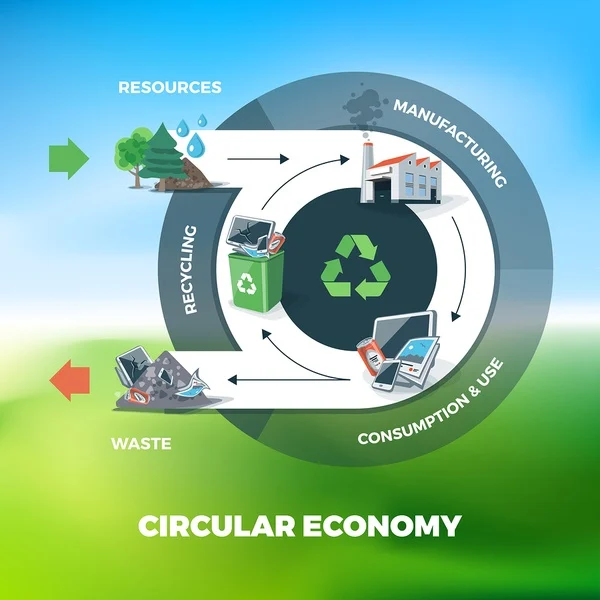
Traditional packaging usually operates on a linear model: produce, use, and dispose. Circular economy, on the other hand, focuses on a more cyclical approach where products and materials are continually reused and recycled.
The principles of the circular economy can be summarized into the well-known mantra: Reduce, Reuse, and Recycle. These form the basis of circular packaging efforts aimed at reducing environmental impact.
Reusable packaging is designed for multiple use cycles. It often comes with features like enhanced durability and easy cleaning.
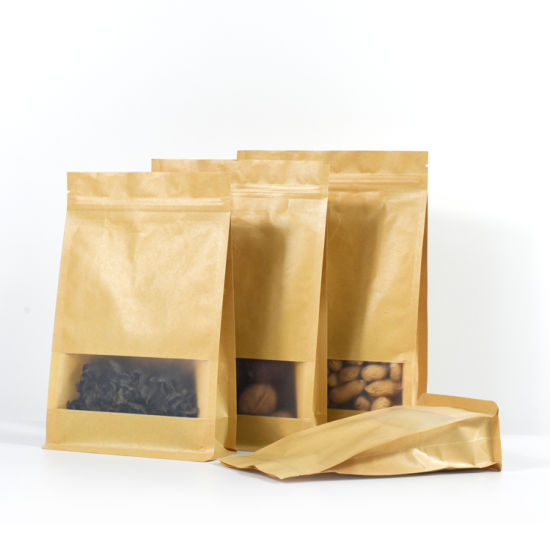
Recyclable packaging is made from materials that can be processed and transformed into new products. The aim is to keep the material within the production loop for as long as possible.
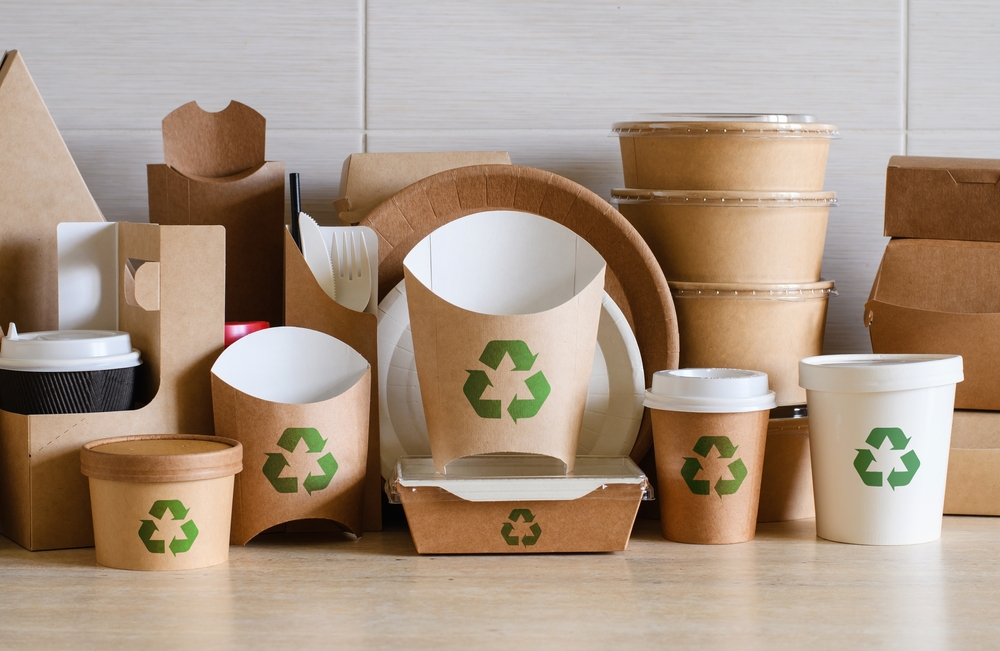
Compostable packaging is an innovative solution that decomposes naturally, converting into nutrient-rich soil and closing the loop in the packaging lifecycle.
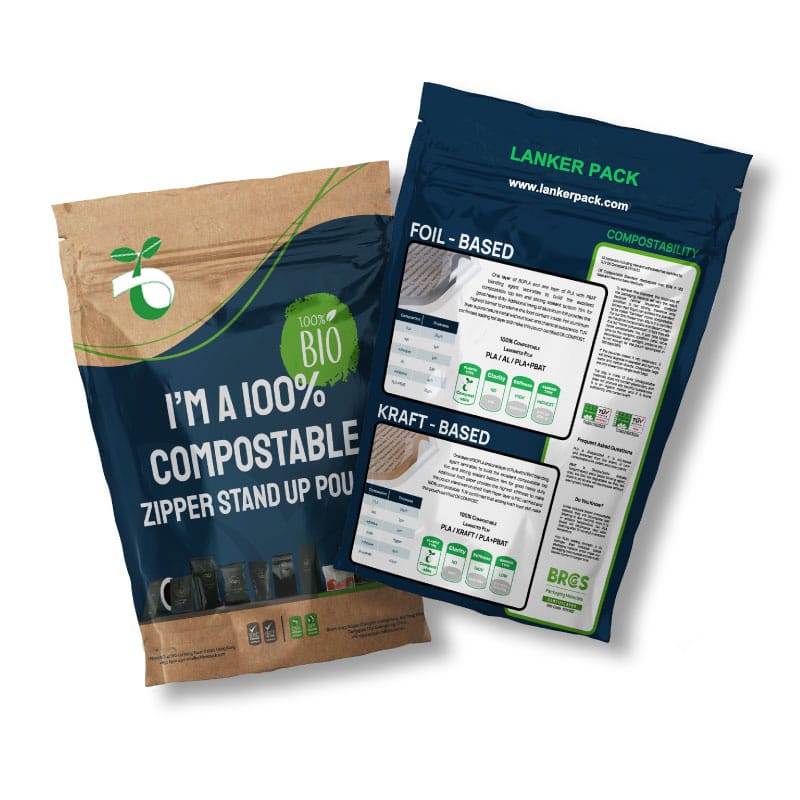
Made from renewable resources, bio-based materials like corn starch or sugarcane are gaining traction for their lower carbon footprint.
Utilizing post-consumer or post-industrial recycled content contributes to waste reduction and keeps materials in use for longer.
These are materials equipped with technology, such as sensors, that facilitate recycling or reuse, making the circular model more efficient.
One of the main appeals of circular packaging is its significantly reduced environmental footprint, contributing to the fight against climate change.
Circular packaging often proves cost-effective in the long run, as materials are reused or recycled, saving on raw material costs.
Brands that adopt circular packaging often gain a competitive edge due to growing consumer demand for eco-friendly products.
Continuous research is being conducted to find materials that are both functional and sustainable.
Advancements in recycling technologies are essential for the effectiveness of circular packaging solutions.
Government policies can play a pivotal role in accelerating the adoption of circular packaging systems.
Brands like Loop are pioneering the use of reusable containers for food items, drastically reducing waste.
Companies such as Lush have introduced reusable packaging for their beauty products, garnering widespread acclaim.
Tech companies are also jumping on the bandwagon by utilizing recycled materials for devices and their packaging.
Certification like the “EcoLogo” can validate a brand's commitment to sustainable packaging, bolstering consumer trust.
Brands are engaging in marketing strategies that highlight their commitment to sustainability, further driving consumer adoption.
A growing trend in the U.S. and Canada, driven by consumer awareness and regulatory pressure.
The EU has set ambitious goals to make all packaging reusable or recyclable by 2030.
Countries like Japan and South Korea are leading in terms of circular economy adoption, particularly in packaging.
The shift towards circular packaging is more than just a trend; it’s a necessity. As we confront the environmental challenges of our time, transitioning to sustainable, circular packaging solutions represents a step forward in the right direction.
Circular packaging is more than a buzzword; it's the future of sustainable solutions in the packaging industry. So next time you pick a product off the shelf, consider its packaging lifecycle. After all, the choice for sustainability begins with you.
Have you ever wondered why Kraft stand-up pouches are becoming increasingly popular? These eco-friendly, convenient, and versatile packaging options are more than just a passing trend. In this comprehensive guide, we'll explore the benefits, uses, and environmental impacts of Kraft stand-up pouches.
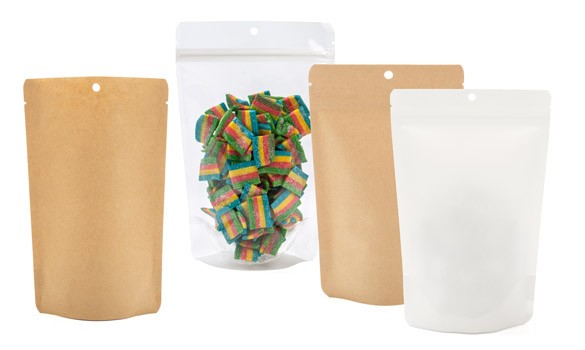
Kraft stand-up pouches are primarily made from Kraft paper, a type of paper that is both strong and porous. They often have an inner layer made from a material like foil or plastic to provide added moisture and oxygen barriers.
The combination of Kraft paper with other materials ensures that the contents stay fresh for longer periods. The multi-layer construction is designed to keep out air, moisture, and light, making it an excellent choice for a variety of products.
The flat-bottom design of these pouches allows them to stand upright, optimizing shelf space and offering better visibility for branding.
Many Kraft stand-up pouches come with resealable zippers or other closure mechanisms, enhancing product freshness after the pouch has been opened.
The stand-up feature, along with a resealable zipper, makes these pouches user-friendly. They are easy to fill, seal, and store, providing both the manufacturer and the consumer with numerous benefits.
One of the most significant advantages of Kraft stand-up pouches is that Kraft paper is biodegradable, breaking down naturally over time.
While the paper itself is biodegradable, the pouches may contain other materials like foil or plastic liners that could complicate recycling efforts. However, advancements in recycling technology are making it easier to separate these materials.
From spices and teas to snacks and pet food, Kraft stand-up pouches are used in a wide range of food packaging applications due to their excellent barrier properties.
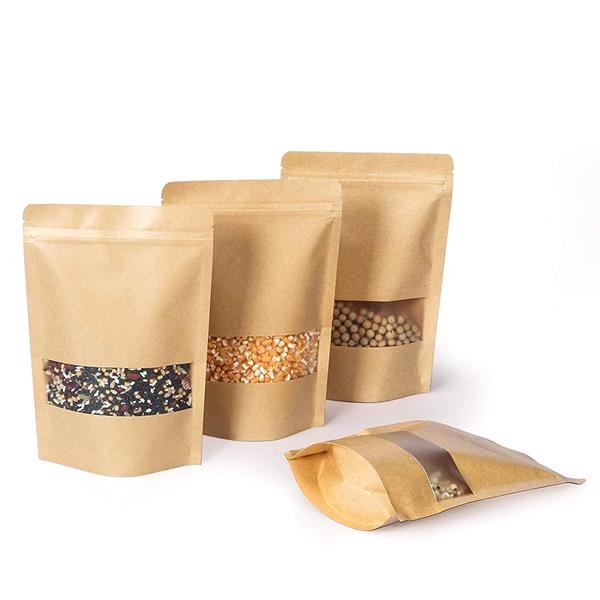
These pouches are also commonly used for packaging non-food items like cosmetics, soaps, and even small hardware items.
The porous nature of Kraft paper makes it ideal for various printing techniques, allowing for vivid, high-quality graphics.
Brands can easily customize the size, shape, and design of these pouches to align with their branding strategy, making them a versatile packaging solution.
While plastic pouches may offer better barrier properties, they are less environmentally friendly compared to Kraft stand-up pouches.
Glass and metal containers are often more expensive and heavier, making Kraft stand-up pouches a cost-effective alternative.
Kraft stand-up pouches are generally less expensive to produce than their plastic, glass, or metal counterparts.
The lightweight and compact nature of these pouches results in lower shipping costs and more efficient storage, providing savings along the supply chain.
The natural, rustic look of Kraft paper often appeals to consumers who are looking for eco-friendly or artisanal products.
The resealable and stand-up features add to the convenience, making them a popular choice among consumers.
Kraft stand-up pouches offer a perfect blend of functionality, aesthetic appeal, and environmental sustainability. As consumer awareness about eco-friendly packaging continues to grow, we can expect Kraft stand-up pouches to become an even more prominent player in the packaging industry.
As we move toward a more sustainable future, Kraft stand-up pouches stand out as a packaging solution that marries functionality with environmental responsibility. Their rising popularity is testament to their versatility and the growing consumer demand for eco-friendly options.
